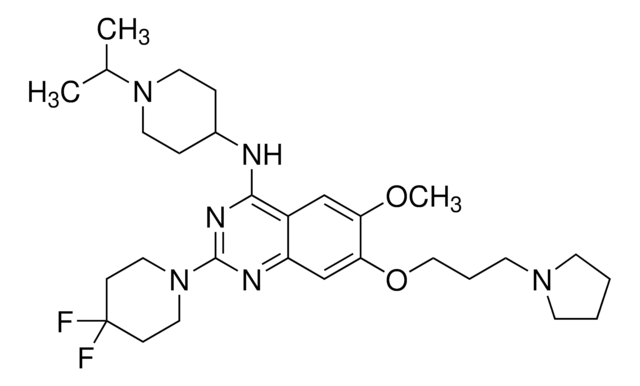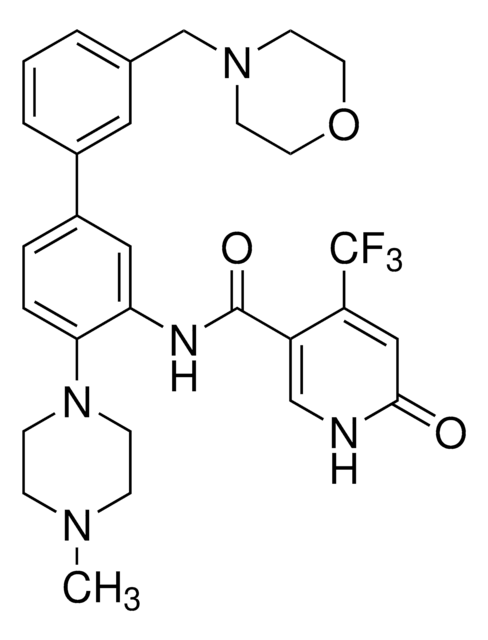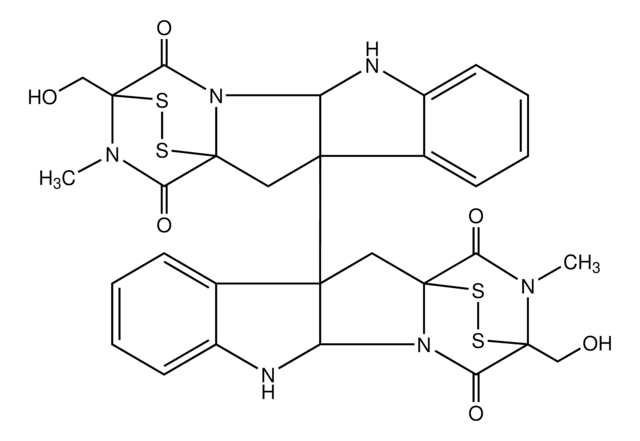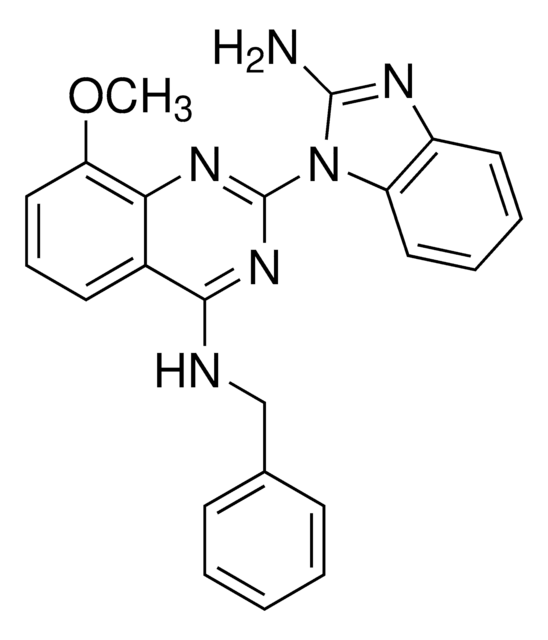Key Documents
SML1565
A-196
≥98% (HPLC)
Synonim(y):
Cyclopentyl-(6,7-dichloro-4-pyridin-4-yl-phthalazin-1-yl)-amine
About This Item
Polecane produkty
Poziom jakości
Próba
≥98% (HPLC)
Postać
powder
kolor
white to light brown
rozpuszczalność
DMSO: 5 mg/mL, clear (warmed)
temp. przechowywania
2-8°C
ciąg SMILES
ClC1=C(Cl)C=C(C(C2=CC=NC=C2)=NN=C3NC4CCCC4)C3=C1
InChI
1S/C18H16Cl2N4/c19-15-9-13-14(10-16(15)20)18(22-12-3-1-2-4-12)24-23-17(13)11-5-7-21-8-6-11/h5-10,12H,1-4H2,(H,22,24)
Klucz InChI
ABGOSOMRWSYAOB-UHFFFAOYSA-N
Działania biochem./fizjol.
SGC2043 is the negative control for the active probe, A-196. To request a sample of the negative control from the SGC, click here.
To learn about other SGC chemical probes for epigenetic targets, visit sigma.com/sgc
Cechy i korzyści
Hasło ostrzegawcze
Danger
Zwroty wskazujące rodzaj zagrożenia
Zwroty wskazujące środki ostrożności
Klasyfikacja zagrożeń
Acute Tox. 3 Oral
Kod klasy składowania
6.1C - Combustible acute toxic Cat.3 / toxic compounds or compounds which causing chronic effects
Klasa zagrożenia wodnego (WGK)
WGK 3
Temperatura zapłonu (°F)
Not applicable
Temperatura zapłonu (°C)
Not applicable
Certyfikaty analizy (CoA)
Poszukaj Certyfikaty analizy (CoA), wpisując numer partii/serii produktów. Numery serii i partii można znaleźć na etykiecie produktu po słowach „seria” lub „partia”.
Masz już ten produkt?
Dokumenty związane z niedawno zakupionymi produktami zostały zamieszczone w Bibliotece dokumentów.
Nasz zespół naukowców ma doświadczenie we wszystkich obszarach badań, w tym w naukach przyrodniczych, materiałoznawstwie, syntezie chemicznej, chromatografii, analityce i wielu innych dziedzinach.
Skontaktuj się z zespołem ds. pomocy technicznej








